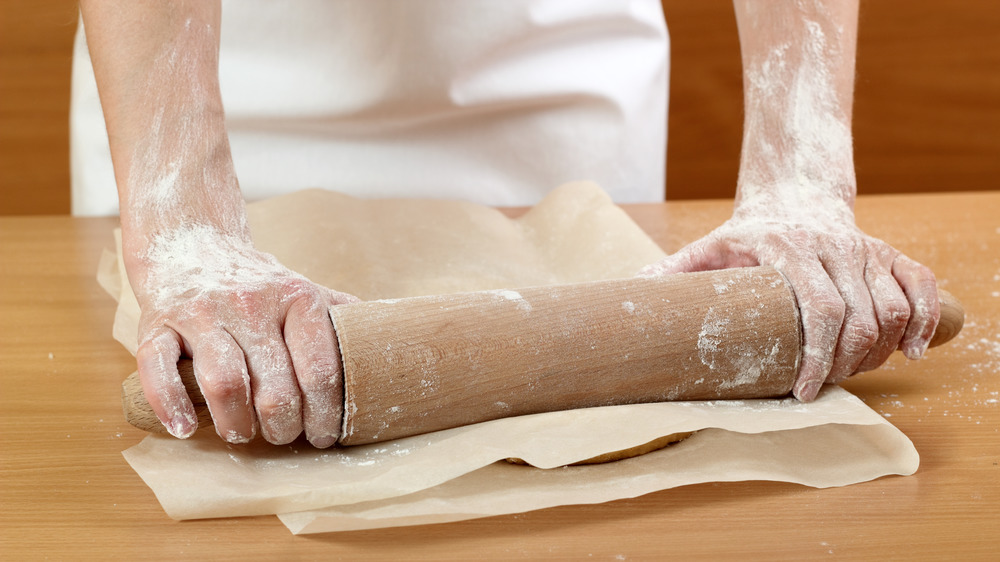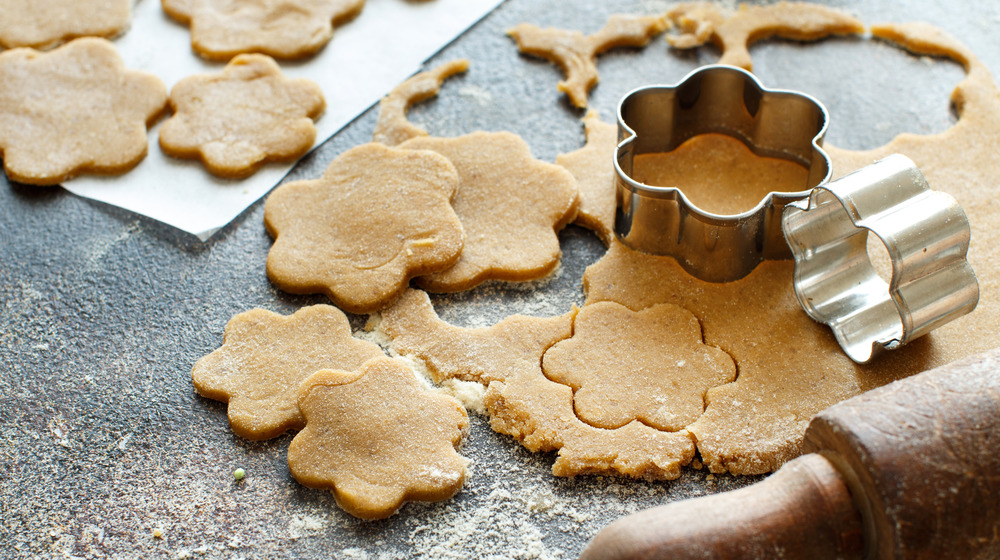These Tricks Will Help You Roll Out Perfect Cookie Dough
If you've ever been intimidated by sugar cookies so flawlessly decorated they made you want to hide your own contributions to the bake sale, then we feel your pain! It's a wonder how anyone ends up with such glamorous, edible creations. If everyone is doing basically the same steps, how can the results be so strikingly different?
It turns out the key to making good-looking cookies may have something to do with rolling out the dough. To set yourself up for success in this area, Taste of Home prep kitchen manager Catherine Ward recommends starting out with the right tools. To roll out heavy or firm cookie dough, you will want to have a thick, heavy rolling pin. If you happen to be using an embossed, wooden rolling pin (fancy!), Chalking Up Success recommends oiling the pin a couple of hours before using it. You should also have wax paper handy and a bit of flour. Once everything is gathered (and maybe some music is playing to set the mood), you're ready to make the dough.
Rolling, chilling, and cutting your cookie dough
After you mix up your dough, you will need to chill it for at least 30 minutes. If you are making a lot of cookies, Ward recommends dividing the dough into smaller, more manageable portions. After you take your dough out of the refrigerator, find somewhere cool to set it. Betty Crocker advises never rolling dough on a warm surface.
Also, rolling the dough between two sheets of "very lightly floured waxed paper" will make for more tender cookies according to Ward. If the dough sticks to the wax paper, put the dough and paper back into the fridge for another 15 minutes to firm it up. The dough should be rolled into a consistent thickness, and there are even rolling pin rings that can be purchased that can help you keep the width uniform, according to Betty Crocker.
When you have finished rolling out your portions, Ward recommends popping the dough back in the fridge one last time before you get to the actual cookie cutting, since using warm dough can lead to wonky cookies with less-defined edges (via Taste of Home). As for the cutting, Betty Crocker says to use metal cutters, dipping them in flour with each cut, and cutting the shapes close together to prevent having scraps that need to be re-rolled. With enough practice, maybe we even have a chance at being the envy of the bake sale — and, if not, there's always the store-bought method!

